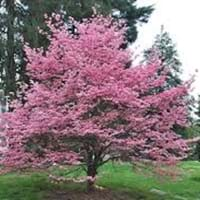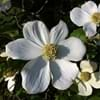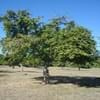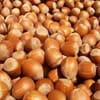Life Span
Perennial
Annual and Perennial
Type
Tree
Bulb or Corm or Tuber
Origin
Canada, Mid-Atlantic United States, North America, North-Central United States, Southeastern United States
Latin America and the Caribbean, Central America, Micronesia
Types
Purple Glory dogwood, Cherokee Chief dogwood, Cherokee Daybreak dogwood
Hannah Yams, Japanese Sweet Potatoes
Habitat
foothill woods, gardens, Near ponds, Wet Woods, Woodlands
Cold Regions, Tropical regions
USDA Hardiness Zone
5-9
11-12
Sunset Zone
2a, 2b, 3a, 3b, 4, 5, 6
21,22
Habit
Pyramidal
Vining/Climbing
Minimum Width
Not Available
Flower Color
White, Ivory
Not Available
Flower Color Modifier
Bicolor
Bicolor
Fruit Color
Purple, Black
Not Available
Leaf Color in Spring
Green
Green, Purple, Light Green, Chartreuse, Bronze
Leaf Color in Summer
Green
Light Green
Leaf Color in Fall
Burgundy
Several shades of Green
Leaf Color in Winter
Not Available
Light Green
Leaf Shape
Ovate
Heart-shaped
Plant Season
Spring, Summer, Fall, Winter
Spring, Summer, Fall, Winter
Sunlight
Bright direct sunlight, Partial Sun
Full Sun, Partial Sun
Growth Rate
Medium
Very Fast
Type of Soil
Clay, Loam
Clay, Loam, Sand
The pH of Soil
Acidic
Acidic, Neutral, Alkaline
Soil Drainage
Well drained
Well drained
Bloom Time
Late Spring, Early Summer
Late Fall, Early Winter, Winter
Tolerances
Cold climate, Soil Compaction
Drought
Where to Plant?
Ground
Ground, Pot
How to Plant?
Seedlings, Stem Cutting
Stem Cutting, Tuber propagation
Plant Maintenance
Medium
Medium
Watering Requirements
Allow to dry out slightly between watering, occasional watering once established
Average Water Needs, Needs a lot of water initially
In Summer
Lots of watering
Lots of watering
In Spring
Moderate
Moderate
In Winter
Average Water
Average Water
Soil pH
Acidic, Neutral
Acidic, Neutral, Alkaline
Soil Type
Loam, Moist, Well drained
Clay, Loam, Sand
Soil Drainage Capacity
Well drained
Well drained
Sun Exposure
Full Sun, Partial Sun, Partial shade
Full Sun, Partial Sun
Pruning
Prune if you want to improve plant shape, Prune lower leaves, Prune once the plant is tall enough
Remove damaged leaves, Remove dead branches, Remove dead leaves
Fertilizers
Fertilize in early spring, Mulch
All-Purpose Liquid Fertilizer
Pests and Diseases
Crown rot, Leaf spot, Red blotch, Whiteflies
Aphids, Beetles, Leafminers, Red blotch
Plant Tolerance
Humidity, Light Frost
Drought
Flower Petal Number
Single
Single
Showy Bark
Not Available
No
Foliage Texture
Medium
Coarse
Foliage Sheen
Glossy
Matte
Attracts
Birds, Butterflies, Hummingbirds, Squirrels
Aphids, Beetles, Mites, white worms
Allergy
allergic conjunctivitis, Headache, Pollen
Abdominal pain, Skin rash, Swelling, Vomiting
Aesthetic Uses
Beautification, Cottage Garden, Showy Purposes
Not Used For Aesthetic Purpose
Beauty Benefits
For treating wrinkles, Makes teeth white, Making cosmetics, Skin cleanser
Not Available
Environmental Uses
Forms dense stands, Nesting sites for birds, Shadow Tree, soil stabilisation
Air purification
Medicinal Uses
Antibiotic, Appetite enhancer, Cough, Diuretic, Emollient, Weight loss
Potassium, ß-carotene, Vitamin C
Part of Plant Used
Bark, Flowers, Fruits, Leaves
Leaves, Root, Shoots
Other Uses
Application in Handicrafts, Decoration Purposes, Grown for shade, Used as Ornamental plant
Used As Food, Used for its medicinal properties
Used As Indoor Plant
No
Yes
Used As Outdoor Plant
Yes
Yes
Garden Design
Edging, Feature Plant, Shade Trees
Container, Edible, Groundcover, Hanging Basket, Herb / Vegetable, Mixed Border, Vine
Botanical Name
Cornus florida
IPOMOEA batatas
Common Name
Flowering dogwood
Sweet Potato, Sweet Potato Vine
In Hindi
flowering dogwood
शकरकंद
In German
Wechselblättriger Hartriegel
Süßkartoffel
In French
Cornus florida
Patate douce
In Spanish
Cornus florida
Batata
In Greek
Cornus florida
Γλυκοπατάτα
In Portuguese
Cornus florida
Batata doce
In Polish
Cornus florida
Słodki ziemniak
In Latin
Cornus florida
Dulcis SOLANUM TUBEROSUM
Phylum
Magnoliophyta
Magnoliophyta
Class
Magnoliopsida
Magnoliopsida
Family
Cornaceae
Convolvulaceae
Clade
Angiosperms, Asterids, Eudicots
Angiosperms, Asterids, Eudicots
Tribe
Not Available
Not Available
Subfamily
Not Available
Not Available
Importance of Flowering Dogwood and Sweet Potato
Want to have the most appropriate plant for your garden? You might want to know the importance of Flowering Dogwood and Sweet Potato. Basically, these two plants vary in many aspects. Compare Flowering Dogwood and Sweet Potato as they differ in many characteristics such as their life, care, benefits, facts, etc. Every gardener must at least have the slightest clue about the plants he wants to plant in his garden. Compare their benefits, which differ in many ways like facts and uses. The medicinal use of Flowering Dogwood is Antibiotic, Appetite enhancer, Cough, Diuretic, Emollient and Weight loss whereas of Sweet Potato is Potassium, ß-carotene and Vitamin C. Flowering Dogwood has beauty benefits as follows: For treating wrinkles, Makes teeth white, Making cosmetics and Skin cleanser while Sweet Potato has beauty benefits as follows: For treating wrinkles, Makes teeth white, Making cosmetics and Skin cleanser.
Compare Facts of Flowering Dogwood vs Sweet Potato
How to choose the best garden plant for your garden depending upon its facts? Here garden plant comparison will help you to solve this query. Compare the facts of Flowering Dogwood vs Sweet Potato and know which one to choose. As garden plants have benefits and other uses, allergy is also a major drawback of plants for some people. Allergic reactions of Flowering Dogwood are allergic conjunctivitis, Headache and Pollen whereas of Sweet Potato have Abdominal pain, Skin rash, Swelling and Vomiting respectively. Having a fruit bearing plant in your garden can be a plus point of your garden. Flowering Dogwood has showy fruits and Sweet Potato has no showy fruits. Also Flowering Dogwood is not flowering and Sweet Potato is not flowering . You can compare Flowering Dogwood and Sweet Potato facts and facts of other plants too.





